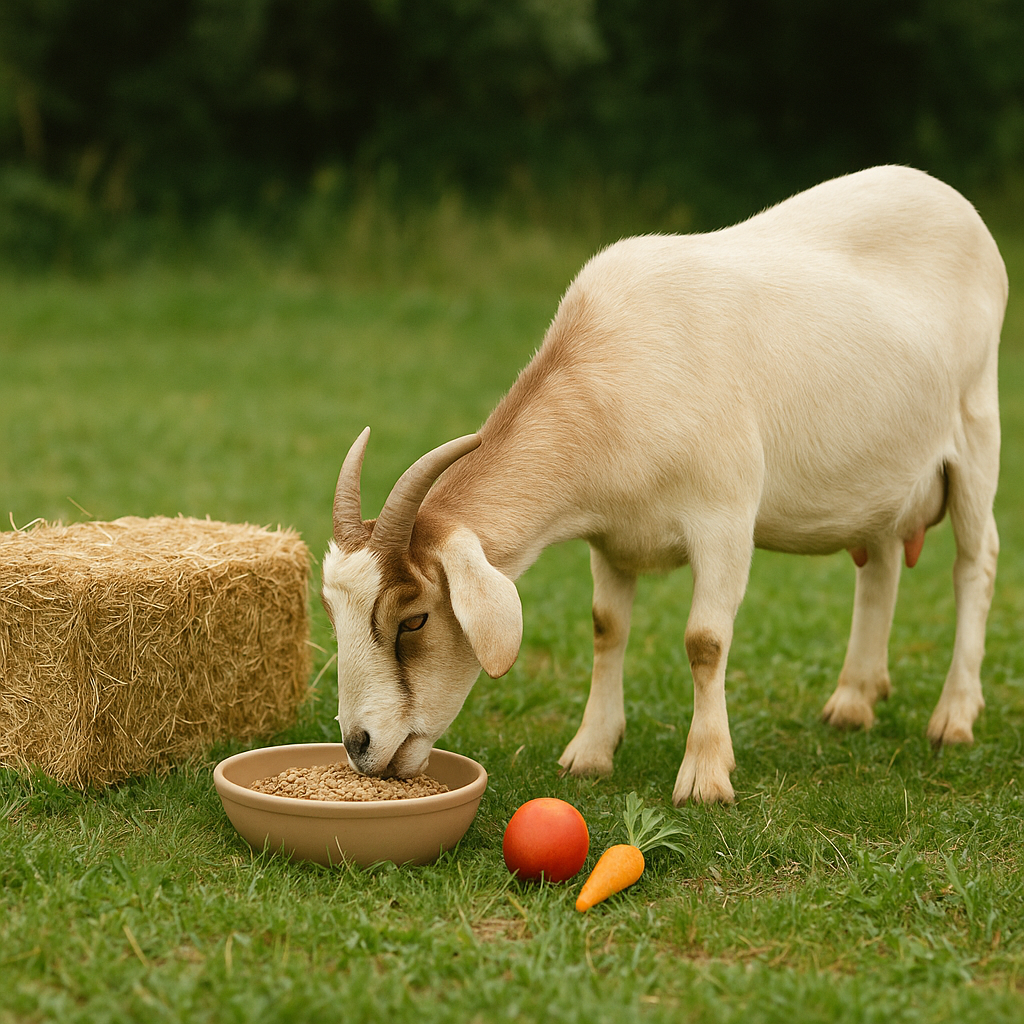
Feeding and Nutrition of Goats: A Complete Guide for Rural and Urban Keepers
Keeping goats happy, healthy and productive comes down to one key principle: good nutrition. Whether you’re raising a small herd in a rural paddock or keeping a pair of pet goats in a small town backyard, what you feed them shapes their health, growth, milk production, and even temperament.
In this guide, we’ll explore the fundamentals of goat nutrition—covering pasture, hay, grain, minerals, treats, seasonal changes, cost considerations, and common mistakes.
Why Goat Nutrition Matters
Goats are natural browsers rather than grazers. Unlike sheep or cows, which happily chew grass all day, goats prefer shrubs, weeds, leaves, and a mix of plants. This unique feeding style means they thrive on variety but also require careful balancing of their diet. A well-fed goat is more resistant to parasites, produces better milk or meat, and stays energetic and content.
For urban owners, this means finding creative ways to provide variety in limited spaces. For rural farmers, it means managing pasture and feed sources sustainably.
Understanding the Basics of a Goat’s Diet
Every goat diet should provide the following essentials:
- Forage (pasture, browse, hay): The foundation of a goat’s diet.
- Concentrates (grains, pellets): Used carefully for energy and production.
- Minerals: Especially calcium, phosphorus, and salt.
- Water: Always fresh and abundant.
- Treats: Occasional extras for bonding or enrichment.
Pasture and Browsing
Goats as Browsers
Goats prefer woody plants, shrubs, weeds, and rough vegetation. If you let them into a paddock with blackberry brambles, gorse, or willow, they’ll often strip the leaves before touching the grass. This makes them excellent for land management but also means they may over-browse areas quickly.
Rural Pastures
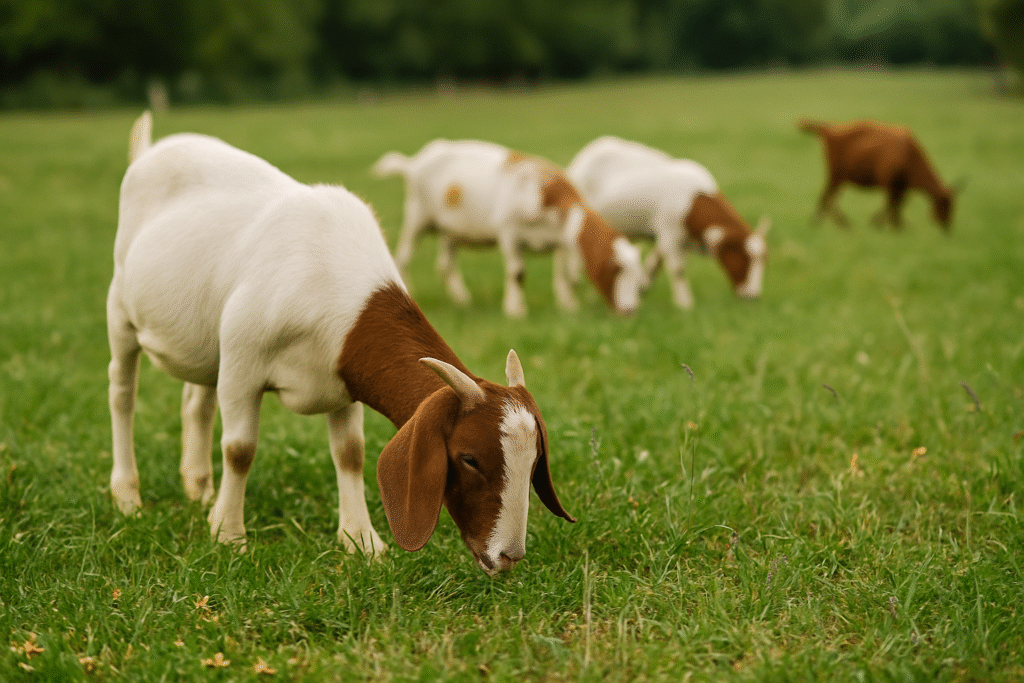
If you have acreage, rotating goats between paddocks prevents overgrazing and reduces parasite build-up. Pastures should include a mix of grasses (ryegrass, cocksfoot, timothy) and legumes (clover, lucerne/alfalfa). Adding shrubby areas or hedgerows makes the goats happier and healthier.
Urban Yards
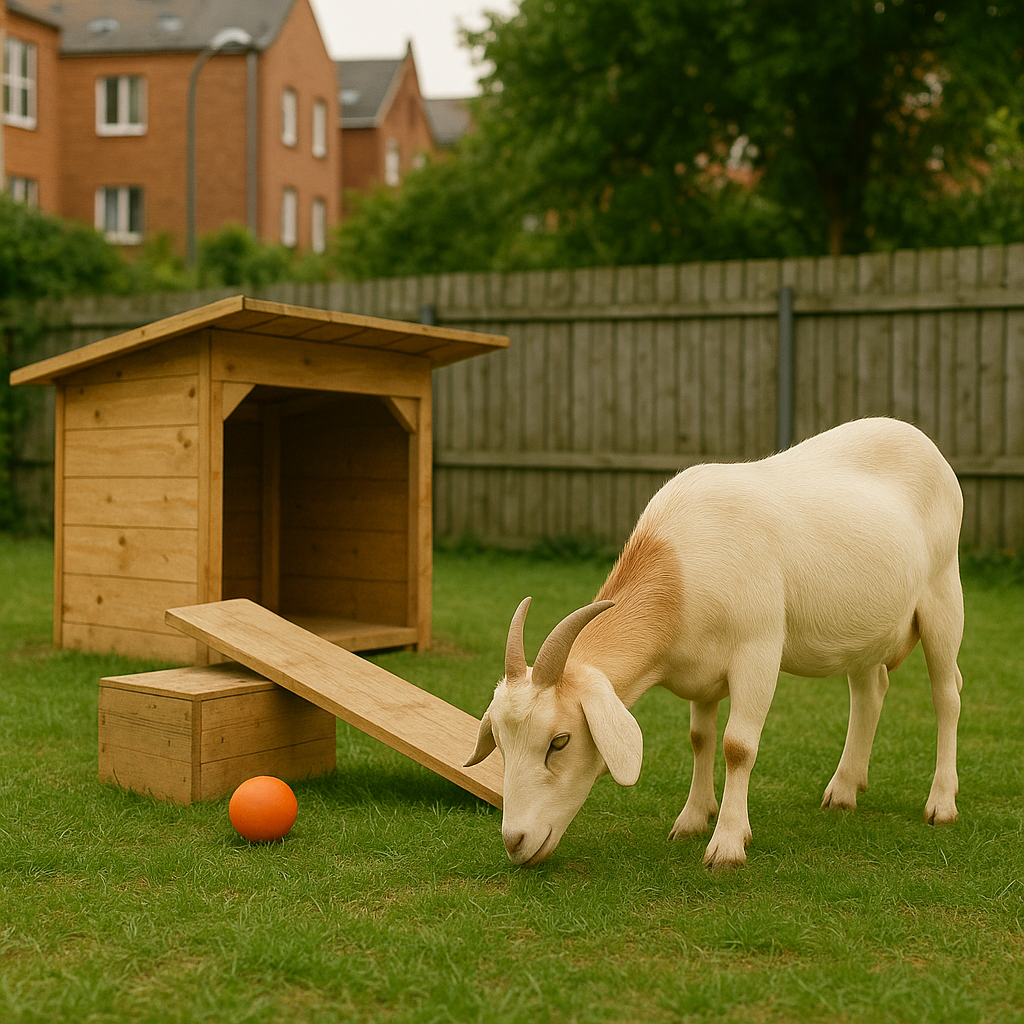
Urban keepers often don’t have endless pastures. In that case, cut branches (safe species like willow, poplar, blackberry, or grapevine prunings) provide enrichment. Avoid toxic plants such as rhododendron, oleander, potato and tomato leaf.
Hay: The Everyday Staple
When pasture is unavailable—during winter, drought, or in small urban yards—hay becomes essential.
- Grass Hay (meadow hay, timothy, ryegrass): Good everyday feed, especially for pet goats.
- Legume Hay (alfalfa/lucerne, clover): Rich in protein and calcium, ideal for kids, lactating does, and growing animals.
- Mix Hay: A balance of grass and legumes, often best for general herds.
How Much Hay?
Goats should consume 2–4% of their body weight in dry matter daily. For a 50-kg goat, that’s about 1.5–2 kg of hay per day. Always feed more than you think—they’re selective and wasteful eaters.

Storage Tips
- Keep hay dry and mold-free.
- Store off the ground with good ventilation.
- Avoid dusty bales, which can cause respiratory issues.
Grain and Concentrates: Use with Care
Grain and pelleted feeds provide extra energy and protein, but they must be used wisely.
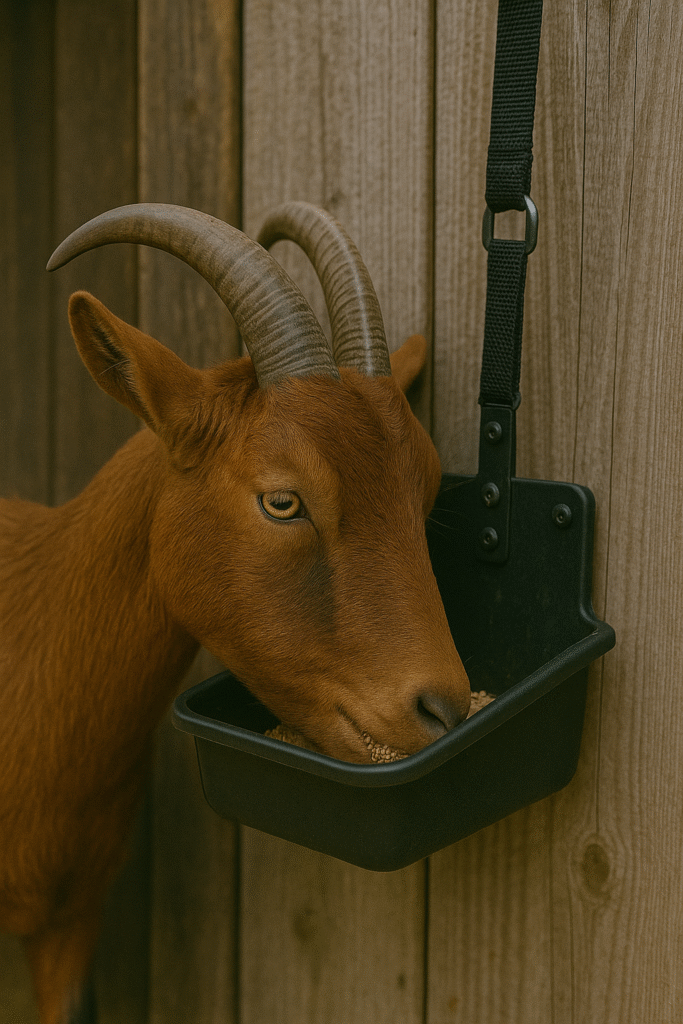
When Grain Helps
- Dairy goats: Extra energy for milk production.
- Pregnant or lactating does: Increased nutritional demand.
- Growing kids or show goats: Helps with growth and condition.
- Working goats: If used for pack or cart pulling.
Risks of Overfeeding
- Bloat from too much fermentable starch.
- Acidosis leading to diarrhea, lethargy, or even death.
- Obesity, especially in pet goats.
Safe Feeding Practice
- Introduce grain gradually.
- Feed small portions (no more than 0.5–1 cup twice daily for standard goats).
- Use goat-specific commercial feeds rather than cattle or sheep feed (sheep feed lacks copper, which goats need).
Minerals and Salt
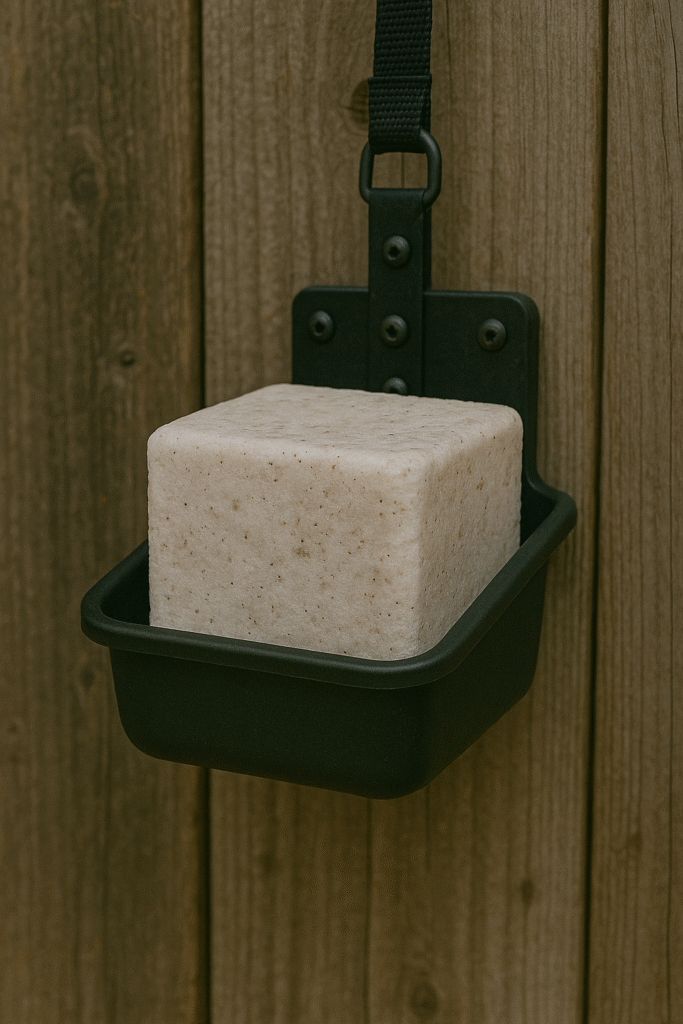
Goats require free-choice loose minerals or mineral blocks formulated specifically for goats. Key minerals:
- Copper: Vital for coat color, fertility, and health. (Sheep feeds lack copper—never substitute!)
- Selenium: Often deficient in some soils; needed for muscle and immune health.
- Calcium & Phosphorus: Especially important for lactating does and bucks (to prevent urinary stones).
- Salt: Supports hydration and appetite.
Urban keepers may find it easiest to buy a goat mineral mix. Rural farmers sometimes supplement through soil testing and targeted mineral blocks.
Water: The Forgotten Essential
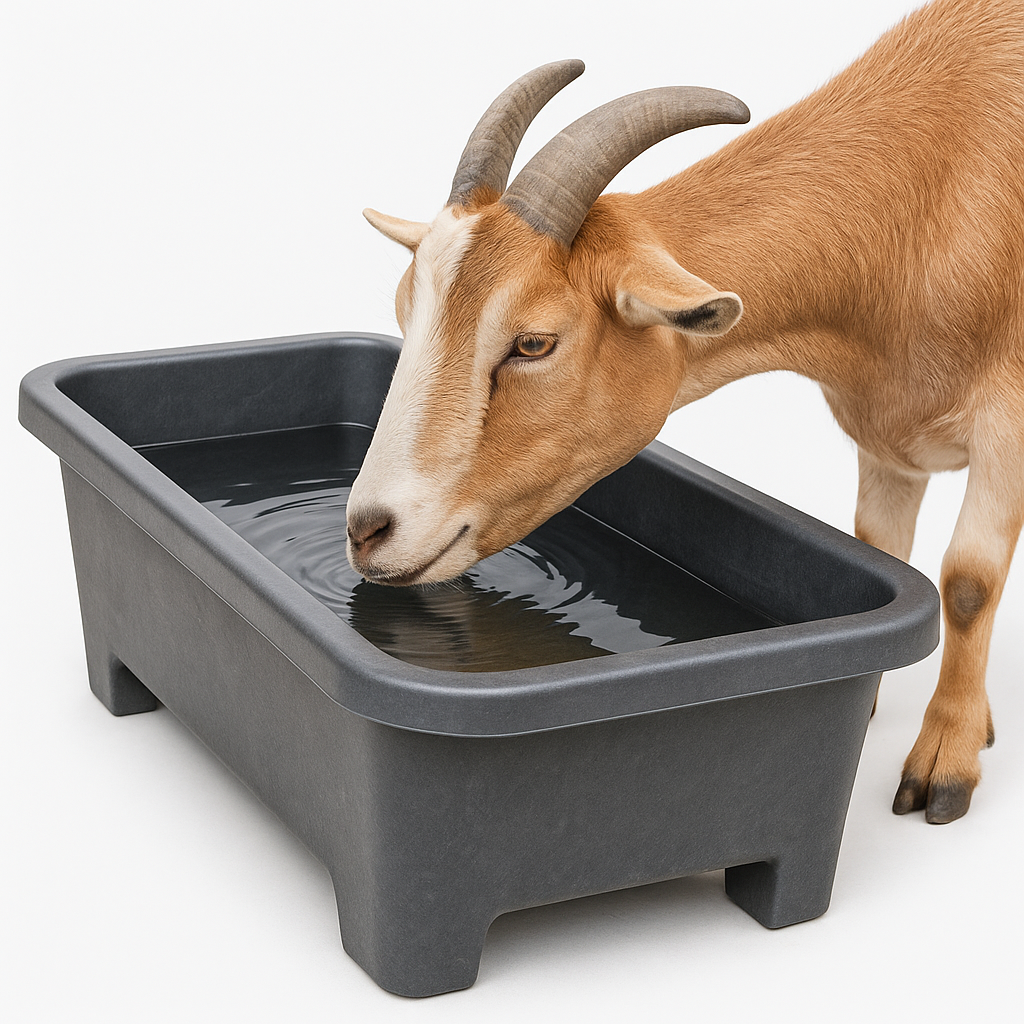
Goats drink more water than many expect—especially lactating does. A single dairy goat can drink 7–15 liters per day. Provide clean buckets or automatic troughs. In cold weather, break ice in troughs daily.
Treats and Extras
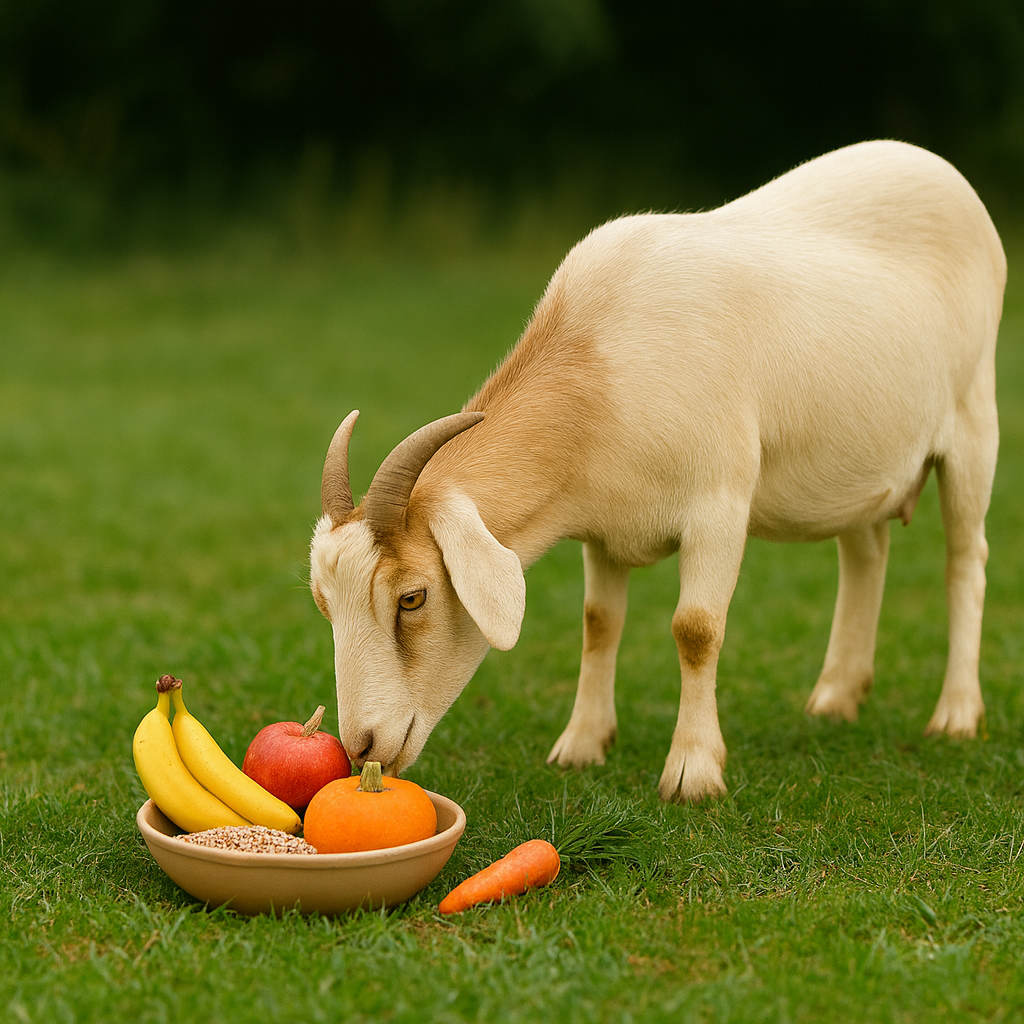
Everyone loves giving goats a little snack, but treats should be less than 10% of their diet.
Safe Treats
- Apples (sliced)
- Carrots
- Pumpkin
- Banana (with peel)
- Sunflower seeds
- Oats
Unsafe Foods
- Chocolate, bread, or processed human foods
- Onions, potato peels, cabbage (cause bloating)
- Toxic plants (azalea, rhododendron, oleander, yew, nightshade)
Treats are best used for training, bonding, or encouraging goats into the milking stand.
Seasonal Feeding Needs
Spring
- Lush new growth—watch for bloat. Introduce gradually from hay to pasture.
- Deworming and mineral boost are often needed.
Summer
- Pasture may dry out—supplement with hay.
- Provide shade and extra water.
Autumn
- Prepare breeding does with slightly increased nutrition.
- Store enough hay for winter.
Winter
- Hay becomes the main diet.
- Extra energy may be needed in cold climates (grain or beet pulp).
- Ensure water is not frozen.
Cost and Balance
Feeding goats isn’t free, and costs can add up quickly depending on herd size and location.
Rural Settings
- Pasture is the cheapest feed but requires fencing, rotation, and management.
- Buying hay in bulk is more cost-effective, though storage is needed.
- Grain is an added expense and should be fed carefully.
Urban Settings
- Small keepers often rely mainly on purchased hay.
- Buying by the bale is convenient but more expensive per kg than bulk.
- Creative sourcing—like safe tree trimmings—can help reduce costs.
Budgeting Example
Two Pet Goats (Urban or Lifestyle Block):
- Hay: Two goats eat around 3–4 kg of hay daily. A small square bale (~20–25 kg) lasts about 6–8 days, so you’ll need ~50–60 bales/year. At $10–$12 each, that’s $300–$430 USD annually.
- Mineral Block: One block lasts 6–12 months for two goats, costing $15–$50 USD annually.
- Grain/Extras: Optional, but a little grain or beet pulp may add $70–$145 USD annually.
- Total annual cost (2 goats): $385–$625 USD.
Small Herd of 20 Goats (Rural):
- Hay: Each goat eats ~2 kg/day, so 20 goats need ~40 kg/day. One small square bale lasts about half a day, meaning ~730 bales/year. At $10–$12 each, that’s $4,380–$5,260 USD annually. (Most rural farmers switch to large round bales or grow hay to reduce this cost.)
- Mineral Blocks: A herd will go through 2–4 blocks annually, costing $60–$190 USD.
- Grain/Extras: For lactating does or growing kids, around $1,080 USD annually is common.
- Total annual cost (20 goats): $5,525–$6,530 USD.
Common Mistakes in Goat Feeding
- Overfeeding Grain – Leads to acidosis and obesity.
- Ignoring Minerals – Causes poor coat, fertility issues, and weak kids.
- Feeding Sheep Feed – Lacks copper, dangerous for goats.
- Poor Hay Storage – Moldy hay can be deadly.
- Not Rotating Pasture – Increases parasite problems.
- Relying on Treats – Can unbalance nutrition and encourage bad habits.
- Forgetting Water – Dirty or frozen water reduces intake and milk yield.
Practical Tips for Urban Goat Keepers
- Build a hay rack to reduce waste.
- Use raised troughs to keep water clean.
- Offer browse daily—trimmed branches, weeds, or garden scraps (safe only!).
- Budget realistically—goats may eat more than expected.
Practical Tips for Rural Goat Farmers
- Rotate pastures every 3–4 weeks.
- Test soil and adjust minerals accordingly.
- Invest in good fencing—goats will wander to find the best browse.
- Buy hay early in the season before prices rise.
The Balance of Nutrition
Goat feeding is about balance: too much of one thing leads to deficiencies in another. Think of it like a puzzle:
- Pasture and hay provide the base.
- Grains and concentrates are puzzle pieces you add carefully.
- Minerals and salt fill the gaps.
- Treats are the final sprinkle—nice, but never essential.
Final Thoughts
Whether you’re raising two friendly goats in a suburban backyard or managing a larger herd on a lifestyle block or farm, feeding them properly makes all the difference. Start with quality forage, add concentrates wisely, never forget minerals and water, and you’ll have happy, thriving goats.
Good nutrition isn’t about spending the most—it’s about making smart, balanced choices that suit your land, your goats, and your budget. For some, that may mean $650–$1,000 a year for a pair of backyard pets. For others, a herd of twenty can cost close to $10,000 annually in hay, minerals, and supplements.
The key is planning ahead, sourcing feed wisely, and remembering that goats repay good nutrition with health, milk, meat, companionship, and their famously quirky personalities.
